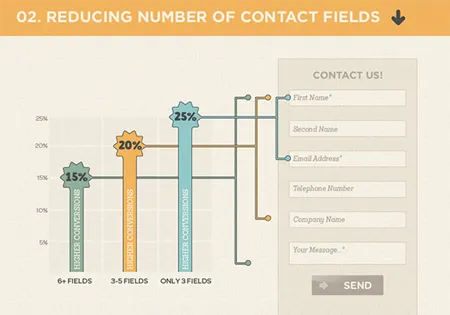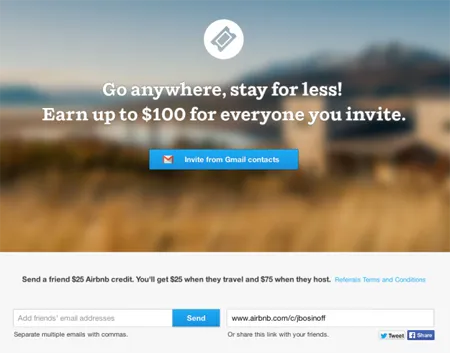The Importance of Rewards and Consumer Behavior
If you are interested in consumer behavior you might be familiar with the principle of utility.
It states that at our core a person only has two reasons for everything we do in life.
Every action we take is to either maximize pleasure or minimize pain.
That’s it. Two reasons. Simple right?
It’s surprising how perfect the reasoning becomes when you apply it to our industry.
For example, If a user is driven to minimize their pain, do you think they will jump through un-necessary pages to take an action?
No, they’re going to expect the simplest route to achieve their desired action. Users will get annoyed when things aren’t presented to them in a clear and concise way.
Reducing Friction
Now I don’t need to tell you that reducing friction is directly tied to minimizing pain. You should never stand in the way of your user when they want to take an action.
A prime example of this is reducing the number of fields required in a contact form. In this study by Neil Patel over at QuickSprout he found that when he took away un-necessary contact fields from a sign-up form the conversion rate would continue to increase dramatically.

Why We Share Things
When you look at why people want to share there are some key motivations you need to consider. One reason is that the user wants to establish credibility among their peers like sharing a new article about a leader like Elon Musk.
Another reason is that the user wants to give their friends something of practical value like a How-To article or video.
An especially interesting motivation for sharing is to let their friends in on something with a limited quantity. Like an exclusive invite, with the new social network Ello or designer community Dribbble.
Even if these invites are relatively easy to get there’s still an element of doing your friend a favor that motivates people to share with their network.

Making a Referral
When you’re looking to get a user to make a specific action like a referral. You should first understand the inner motivation a user has to make an invite on your behalf.
For instance, If your product caters to a price-sensitive crowd you could look to minimize the users’ pain by offering them a discount or dollar credit reward.
Keep in mind that these type of reward structures don’t work for products that aren’t quite there yet and aren’t delivering enough value to the user on their own. A referral program can only accelerate the natural word of mouth that’s happening with the product or service.

Importance of Progress Bars
Another great way to motivate users to take specific actions within your product is the use of progress bars. It lies under the maximizing pleasure aspect of the ‘utility principle’ and can help with everything from product onboarding to increasing referral program participation.
The idea is that if you can give the user the perception that they’ve already made it a percentage of the way there. They are now more likely to complete the prompted action like completing their profile or making a referral as they have an inner motivation to continue that momentum.

TL;DR
“When considering how important viral and word-of-mouth growth can be to helping companies dominate a market, understanding which users are most likely to recommend the product to others becomes a strategic asset. By recognizing the value of user habits, companies can leverage the loyalty of their happiest customers.” – Nir Eyal
We learned that users only really want to do two things with your product or service. They want to maximize pleasure and minimize pain wherever possible.
Use this to guide your user experience research and optimization efforts. By always being on the lookout for ways to reduce friction you will be able to find hidden growth opportunities for your company.